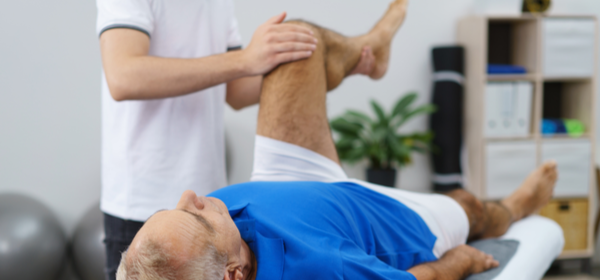Faye is booked to have knee replacement surgery and is seeking advice on what exercises she can do before the surgery so that she is as prepared as possible. We asked physiotherapist Jason Lee for his advice.
Q. I am booked to have a total replacement of my right knee as I have got to the stage of bone on bone. I have some pre-existing complications that go back to when I was a toddler. I have been on crutches for about 30 years. Living on my own has created a lot of problems, for instance, how to cook and carry a plate of food to the table. I have personal carers to shower me three days a week. All people are different – and I am very different – but I’m hoping you can advise on anything I can do to help me prepare for the operation and to speed up my recovery.
A: It is fantastic to see you are doing all the right things and seeking exercises to strengthen the knee before surgery.
As you’ve noted, everyone’s prehabilitation will differ and it’s important to tailor your prehab based on your individual circumstances. It is great to see that you have been attempting to strengthen muscles that will be specifically affected following knee surgery, such as the thigh muscles, including the quadriceps and hamstrings.
In addition to strengthening muscles surrounding the surgical site, I also recommend you improve your overall strength and endurance before the surgery. For example, I’d encourage you to do exercises to improve the endurance and strength of your upper body. Anything that improves muscles in the forearms, shoulders and chest would be beneficial.
It is amazing how reliant we become on these muscle groups when using crutches during the first few weeks after surgery. Try exercises such as bicep curls or shoulder presses. The weight does not need to be heavy as endurance is more important. Try using a light weight, such as a drink bottle or a can of tinned food, and build up to between 25 and 30 repetitions.
On the knee, I would also recommend strengthening other muscle groups in the lower limb. Calf strength is equally important, so do some calf or heel raises – in either a sitting or standing position.
You can also improve your hip strength by performing ‘bridges’, that is, lying on your back, knees bent, feet on the ground, and raising your hips.
Importantly, as you have been doing, continue to be as mobile as you can before surgery. Incidental walking or even walking around home in short bursts will be of great benefit. While it sounds very simplistic, walking is one of the best exercises you can do before surgery.
Both prehabilitation and rehabilitation are gradual, challenging and steady processes. It’s fantastic to see you persist despite a range of challenges. Best of luck with the prehabilitation and rehabilitation following surgery!
Jason Lee APAM
B. Physiotherapy
Malvern East Physiotherapy
Jason is happy to answer any questions you may have. Simply send an email to [email protected]
Related articles:

